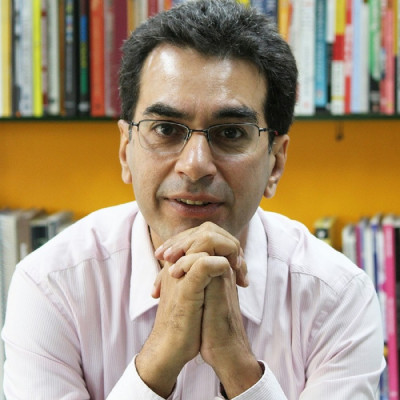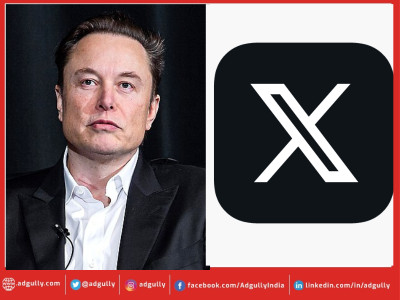IT Rules amendment: Govt intervention or self-regulation, some grey areas remain
The Laws and Rules in the tech space have evolved rapidly in the last two years with the increase in social media and digital usage by the consumers. The Ministry of Electronics and Information Technology (MEITY) noted that there is a need to amend the IT Rules to keep up with the challenges and gaps emerging in an expanding digital ecosystem.
The IT Act 2000 was brought into action and the focus of IT Rules 2000 was to provide “electronic commerce”, or transactions made via electronic data exchange and other forms of electronic communication, a legal status. However, issues like Cybercrime and Cyberbully were not mentioned in the act.
Hence, The Information Technology Amendment Act, 2008, a significant revision to the IT Act, 2000, was adopted in 2008 to address some of the primary problems. The insertion of the Section 66A, which punished transmitting ‘offensive texts’, was one of the changes highlighted. Additionally, it created Section 69, which granted authorities the power to ‘intercept, monitor, or decode any information through any computer resource’. It also included laws addressing voyeurism, child porn, cyberterrorism, and pornography.
Although the amendments and the numerous rules outlined aimed to address a number of issues, experts believe the issues like transparency, cyber security, spamming, phishing, data protection in online banking, privacy protection, identity theft, cyber war, cyber stalking, cyber fraud, chat room abuse, theft of internet hours, copyright and trademark violations, gaming, cryptocurrency, social media, and many others still need to be addressed.
Major pieces of secondary and subordinate legislation like the Information Technology (Intermediaries Guidelines) Rules, 2011, the Information Technology Intermediary Guidelines (Amendment) Rules, 2018 and the Information Technology (Intermediary Guidelines and Digital Media Ethics Code) Rules, 2021, have been notified to make basically social media intermediaries accountable. These Rules have been framed to curb users from engaging in online material which is paedophilic, pornographic, hateful, racially and ethnically objectionable, invasive of privacy, etc., and to prevent mob lynchings spurred by fake news and rumours and messages circulated on social media platforms.
The Information Technology Act of 2000 and its following amendments/ rules were insufficient, and the Government of India intends to draft the Digital India Act (DIA) in the coming months to solve these issues. This has been stated by the Minister of State for Electronics and Information Technology, Rajeev Chandrashekhar. According to him, India will replace the IT Act of 2000 with a new law called the Digital India Act that will include a new set of laws and regulations that will “act as accelerators for innovation and defending citizen's rights”. To help India flourish in the “techade”, the new legal system will be adjusted to the realities of the 21st Century.
Now, the government declared on Saturday, October 29, 2022, that platforms operating in India will have to abide by local laws and the Constitutional rights of Indian users. As a result of the new IT Rules, social media companies are legally required to use all reasonable means to prevent the dissemination of illegal content and false information. The guidelines have been created in response to complaints regarding intermediaries’ responses to user complaints about unacceptable content, including measures such as suspending accounts or inaction.
Also Read: IT Rules amended; new Grievance Appellate Committee for social media complaints
Posting this on his Twitter handle, Rajeev Chandrasekhar, Union Minister of State for Electronics and Information Technology, and Union Minister of State for Skill Development and Entrepreneurship, said, “Digital Nagriks/ citizens’ grievances will now never go unaddressed under amended #ITrules – a Grievance Appellate committee formed.”
He further posted, “Amended #ITrules makes Intermediaries responsible for enforcing their own content guidelines AND also ensure NO content on platform of 9 types from Porn to someone else's content to online gambling to misinformation, etc.”
Chandrashekhar further tweeted, “New amended IT Rules are the next step to realising our government’s duty to Digital Nagriks of Open, Safe & Trusted, Accountable Internet. It also marks a new partnership between Govt and Intermediaries in making and keeping our Internet safe & trusted for all Indians.”
He also stated that the new changes to the Information Technology (IT) rules ensure that these platforms cannot suspend citizens’ accounts without following a deliberate procedure.
Adgully reached out to a cross-section of experts from the digital space to know about their views and opinions on the new amendment to the IT Rules and how it will impact the social media ecosystem.
Ashok Lalla, a Digital Business Advisor, noted, “The changes have been made with the idea to increase the accountability of the intermediaries and social media platforms to its users and to ensure compliance to the Constitution of India. This is always a positive thing. While accountability was expected earlier too, the onus on the platforms has been more strongly emphasised now. The strengthening of the redressal mechanism by replacing the Grievance Redressal Officer with a Redressal Committee is another aspect of the new rules. However, the compliance to the rules by the platforms and how easily an ordinary citizen receives relief via the Grievance Redressal committee when they are aggrieved is to be seen and will demonstrate the true effectiveness of the revised rules.”
On the other hand, Ashish Bhasin, Co-Founder and Chairman, RD&X Network, was of the opinion that the regulation should be self regulatory rather than Government imposed. He added, “There is definitely some need to regulate social media and even some part of the OTT channels. The reason for that is the polarisation that can happen through fake news is very strong. The committee is going to be constituted within three months, which will be an appellate-like committee for looking at the content, whether it's appropriate or not. I feel that the intent is right, but I’m always a little worried about the Government getting into censorship. Things can go the other way in that sense.”
According to Bhasin, the better solution is that there should be some sort of restraint and regulation, particularly where there is false information being spread or any harmful or mischievous activity done. But the solution, he felt, was self regulation by the industry itself. “The tech players are large enough and have enough technology and resources. A body like ASCI, which is an industry-led body, gets self regulation, it involves intellectuals from the public space, it involves people from the industry, it also involves experts and knowledge holders in the field. That to me would make it more palatable than a Government appointed committee looking into it. I fear that it should not get misused,” he opined.
Atul Raja, Executive Vice President – Global Marketing, Wadhwani Foundation, said, “The Information Technology (Intermediary Guidelines and Digital Media Ethics Code) Amendment Rules, 2022 should prove to be effective in removing some of the ambiguity of the IT Rules 2021 and the biggest change is that social media platforms are now subject to the sovereign law of India as they need to comply by the provisions of the Constitution of India. The new rules are designed to bring transparency, safety and accountability through a digital media ethics code, which will regulate the use of social media, online news platforms and other digital channels and assumes significance in the light of the high degree of proliferation that we are seeing in fake news, misinformation, objectionable and defamatory content. Significantly, the Social Media Intermediaries will now be required to have a Compliance or Grievance Officer, who will come under the purview of the Grievance Appellate Committee, which has the power to override the decision of the Compliance or Grievance Officer. This is significant as it provides a redressal and governance forum for the first time besides judicial recourse. It is likely to significantly impact how information is shared in India and create a more responsible and responsive online environment.”
He further added, “Although the amendment is aimed at taking down defamatory, inflammatory or offensive content through stricter Intermediary Guidelines and protecting users from arbitrary ‘deplatformization’, there are still some grey areas to be addressed before we can have a final say in this matter like:
(1) Expeditious redressal of complaints is outlined as within 72 hours of reporting. In today’s ‘redefined’ social media age, this is too long a period
(2) The amendment applies to Significant Social Media Intermediaries (SSMIs), defined as platforms with over 5 million subscribers. This leaves a huge number of small and medium digital platforms outside the purview of the amendment
(3) The structure, scope, powers, composition and terms of reference of the Grievance Appellate Committee are yet to be formalised and much will depend on how the right balance is struck on these parameters so that free speech and public discourse are protected.”





















Share
Facebook
YouTube
Tweet
Twitter
LinkedIn